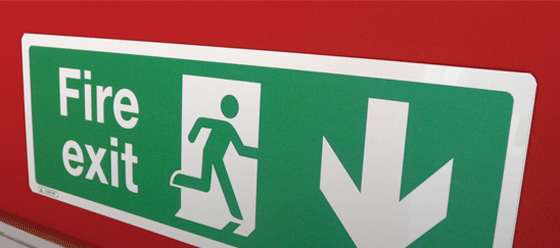
Those that work in hazardous environments must look for ways to increase health and safety. There are many ways to achieve this, but one of the most useful and important ways is to place health and safety signs around the premises. These signs are designed to communicate key messages quickly and succinctly. For example, by showing a site entrance, marking an emergency exit, or drawing attention to flammable liquids and demonstrating how to store these safely in cages (from sites like STOREMASTA). These signs can even communicate a message subconsciously, much like how traffic signs work on the side of the road.
These signs can alert employees and members of the public to certain hazards in the area, and this can also stop incidents from occurring. Not only this, but safety signs also develop safety awareness for employees as the presence of the hazard is constantly on their mind. This is crucial for reducing accidents and especially in areas like construction sites, but also in offices.
Of course, every industry has different hazards and some more than others. With this in mind, it is important that a company assesses their workplace and what the dangers are. They should then invest in high-quality health and safety signs to place in highly visible and relevant spaces.
Signs are usually discriminated based on the shape and colour:
Shapes
- Triangle – Caution for potential hazards or warning for definite hazards
- Circle – Mandatory actions (e.g. put on a hard hat)
- Square or rectangle – General information
- Circle with a slash through the middle -forbidden
Colours
- Red – Areas for emergency devices or prohibited actions
- Yellow – Be careful and aware of nearby hazards
- Blue – Actions or behaviour
- Green – Shows the location of emergency equipment or measures (first aid kits, fire exits, etc.)
A few more standard safety signs that you see in workplaces include:
- Fire action notices
- Fire exit and Emergency Escape signs
- Fire equipment signs
- First-Aid signs
- No Smoking
- Wet Floors
- Obstacles or Dangerous Locations (trip hazards, mind your head, etc.)
- Chemical Storage
- Kitchen/Catering
As you can see, the type of signs that you have in your workplace depends mostly on the type of your industry.
Once you identify which signs you need by assessing your workplace and carrying out a risk assessment, you then need to decide how many signs you need. This will depend on a range of factors, including the size of the building, the number of people onsite and how the building is used. One of the best ways to calculate how many signs you need is to look at building plans and mark where potential hazards are. This will give you a clear indication as to how many you need and where they should go.
Once you have your signs placed in suitable spaces, it will drastically reduce the chance of an incident occurring onsite.
*Featured Post

Hi Becky! Your post is really informative. I just started working for a local construction company, and I’m still not used to the different signs set up on site. But after reading your article, I’ve learned a lot about the significance of colours and shapes of safety signs and how useful they are in giving different warnings. Thanks to you, I can now help our company when acquiring new construction health and safety signs from our partner supplier.
It’s nice that you pointed out how safety signs could alert employees and member of the public to certain hazards in the area, and this could also stop incidents from occurring. I was walking around my workplace the other day and I just noticed how the whole space actually got different kinds of signages. I didn’t know that there are actually various types of signages, like glow exist signs for example.